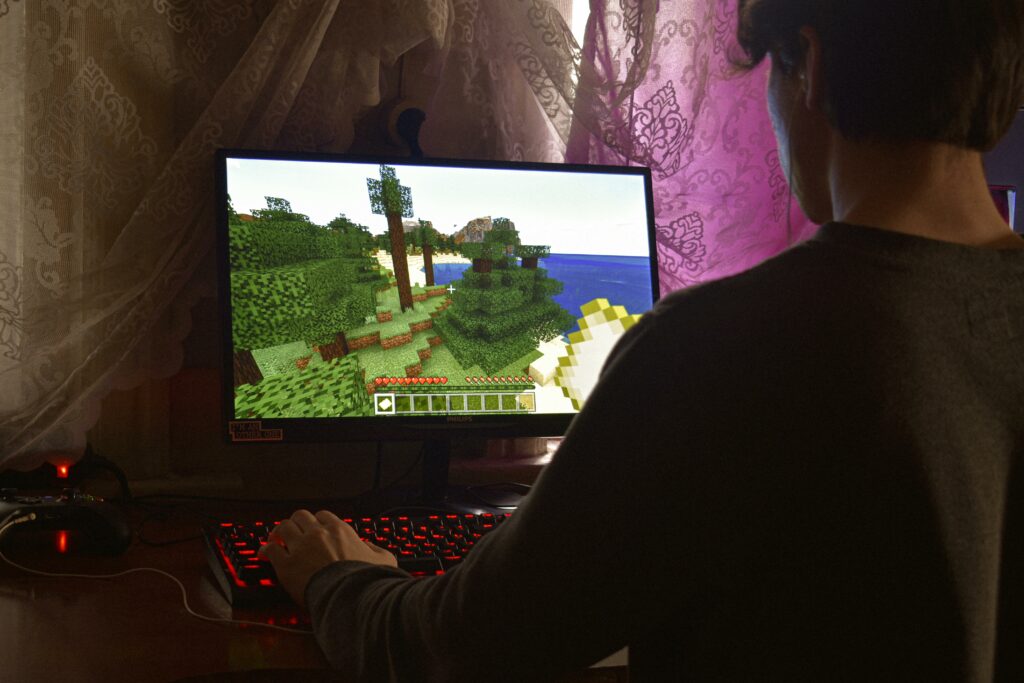Gaming Setup Tips
A respected gaming setup entails more than just a powerful computer. It comprises meticulous details, including the quality of the gaming desk and chair.
Gaming chairs provide comfort and support, critical for intense gaming sessions. Lumbar support cushions, armrests, and adjustability features significantly enhance the gaming experience. For instance, adjustable tilt and height mechanisms allow gamers to achieve optimal viewing angles and maintain proper posture.  In addition, chairs with memory foam cushioning provide excellent pressure relief, minimizing discomfort after hours of sitting.
In addition, chairs with memory foam cushioning provide excellent pressure relief, minimizing discomfort after hours of sitting.
Selecting the appropriate gaming desk significantly influences the overall gaming experience. The desk should accommodate all necessary gaming gadgets, including monitors, keyboards, mice, gaming consoles, and headphones. Ample desk space guarantees unrestricted mouse movement which could give gamers an edge in competitive games like first-person shooters. Additionally, consider the construction quality. Good quality desks, such as ones made from solid wood or steel, ensure longevity and sturdiness. Moreover, a well-organized cable management system prevents dreaded cable clutter, ultimately enhancing the aesthetic appeal of the setup.
Key Hardware Components in a Gaming Setup
A gamer’s paradise isn’t complete without understanding and implementing the key hardware components. The interplay of various high-end devices defines the gaming setup’s environment.
Evaluating a gaming setup begins with the monitor. It’s the visual conduit connecting gamers to their virtual battlegrounds. HD monitors, for example, Acer Predator X27 and ASUS ROG Swift PG279QZ, offer high resolution and refresh rates. These features assist in delivering superior graphic quality, reducing eye strain, and ensuring smooth in-game transitions. A monitor with a high refresh rate and superior resolution turns gaming into an immersive experience.
A gaming computer’s brain, namely the Central Processing Unit (CPU) and the Graphics Processing Unit (GPU), also holds prominence in a gaming setup. The CPU processes game instructions while the GPU handles displaying the game’s graphics. High-performance models such as the Intel Core i7-9700K CPU and NVIDIA GeForce RTX 2080 Ti GPU significantly enhance game detail and response speed, optimizing gameplay for a competitive edge.
Finally, ample RAM and storage complement a well-rounded gaming setup. RAM, or Random Access Memory, allows a computer to work with more information at the same time, impacting in-game loading times and responsiveness. Brands like Corsair and Kingston HyperX Fury offer RAMs that provide fast memory speeds. Simultaneously, a decent storage device, such as the Samsung 970 EVO Plus SSD, ensures that games don’t stutter and load quickly, offering an uninterrupted gaming experience. Thus, balance between sufficient RAM and storage escalates gaming performance to a higher level.
Essential Gaming Setup Tips for Console Gamers
In the realm of console gaming, setup mastery takes more than just owning a high-performing system. It’s about understanding the optimal settings and organization to maximize the overall gaming experience. From console positioning to choosing the right TV, every scenario matters in this gaming world.
Proper positioning of a gaming console involves two crucial factors: ensuring the console doesn’t get overheated and providing clear, strong signals for wireless controllers. Consoles, like the PlayStation 4 or Xbox One X, must be placed in a space with good ventilation. Enclosed spaces can trap heat, leading to thermal throttling and decreased performance. Furthermore, game consoles shouldn’t be obstructed or filled with clutter, as this can interfere with wireless signal transmission.  For example, placing it aside or under the TV stand usually works best, ensuring a direct path between the console and controller.
For example, placing it aside or under the TV stand usually works best, ensuring a direct path between the console and controller.
As for TV, the performance isn’t merely about the size, but rather, it’s more about resolution, refresh rate, and input lag. Gamers should opt for a TVs with at least full HD (1080p) resolution, such as Sony’s X950G Series or Samsung’s Q70 Series. For an enhanced gaming detail, a 4K resolution TV such as LG CX OLED provides a crisper and more detailed image. Furthermore, a refresh rate of 120Hz is ideal for delivering smooth, lag-free visuals. LG’s Nano85 Series is an excellent choice as it brings a combination of 4K resolution and a 120Hz refresh rate. Most importantly, the input lag, which is the delay between a command from a controller and the TV displaying it, should be less than 30 milliseconds. TVs such as the Sony X900F and Samsung Q80 come with ‘Game Mode’ settings that significantly reduce input lag ensuring real-time reactions in fast-paced games.



